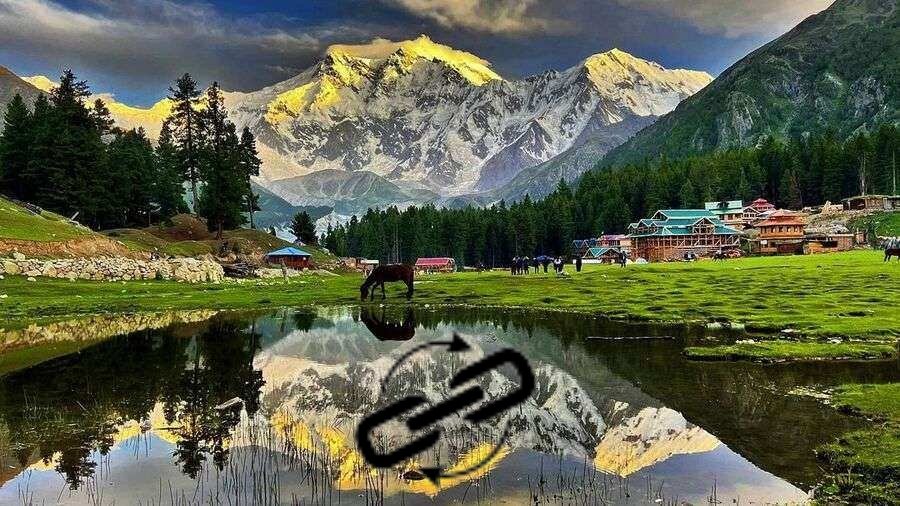Pakistan’s northern areas are a testament to nature’s magnificence, offering a mesmerizing blend of towering mountains, lush valleys, crystal-clear rivers, and serene lakes. This region, often called a paradise on earth, draws adventurers, nature enthusiasts, and cultural explorers from around the globe. From the majestic peaks of the Karakoram Range to the verdant valleys of Hunza and Swat, Pakistan’s northern areas provide an unparalleled travel experience, rich in natural beauty and cultural heritage.
The Gateway to the North: Gilgit-Baltistan
Gilgit-Baltistan, often considered the gateway to Pakistan’s northern areas, is a land of staggering beauty and immense cultural significance. This region is home to some of the world’s highest peaks, including K2, the second-highest mountain. The journey to Gilgit-Baltistan typically begins in Islamabad, Pakistan’s capital, where travelers can fly to Gilgit or Skardu or embark on an adventurous road trip via the Karakoram Highway.
Hunza Valley: A Jewel in the Crown
Hunza Valley, nestled in the Gilgit-Baltistan region, is perhaps the most famous among Pakistan’s northern areas. Surrounded by snow-capped peaks like Rakaposhi, Ultar Sar, and Ladyfinger Peak, Hunza offers breathtaking views that seem almost surreal. The valley is divided into three parts: Upper Hunza (Gojal), Central Hunza, and Lower Hunza, each with its unique attractions and charm.
Visitors to Hunza are often captivated by the ancient Baltit and Altit forts, which glimpse the region’s rich history. The vibrant local culture, characterized by warm hospitality and unique traditions, adds to the charm of this valley. Seasonal fruit orchards, terraced fields, and the serene Hunza River further enhance the valley’s picturesque landscape.
Skardu: Gateway to the Mighty Karakorams
Skardu, another gem in Gilgit-Baltistan, is the gateway to the mighty Karakoram Range and some of the world’s most challenging trekking routes. The region is renowned for its stunning landscapes, including the serene Shangrila Resort, known as “Heaven on Earth,” and the tranquil Satpara and Sheosar lakes.
For trekking enthusiasts, Skardu is the starting point for expeditions to K2, Broad Peak, and the Gasherbrum peaks. The mesmerizing Deosai National Park, known as the “Land of Giants,” is another major attraction, offering vast plains filled with wildflowers and a rich variety of wildlife.
Swat Valley: The Switzerland of Pakistan
Swat Valley, often called the Switzerland of Pakistan, is in the Khyber Pakhtunkhwa province. This valley is known for its lush green landscapes, pristine rivers, and historical sites. Mingora, the largest city in Swat, is the central hub for tourists exploring the valley.
Malam Jabba: A Skiing Paradise
Malam Jabba, one of the few ski resorts in Pakistan, is a must-visit destination in Swat Valley. Surrounded by dense forests and panoramic views of the Karakoram Range, Malam Jabba is a haven for winter sports enthusiasts. The resort has modern facilities, including ski lifts and hotels, making it a popular destination for domestic and international tourists.
Kalam: Nature’s Abode
Kalam, located at the northern end of Swat Valley, is famous for its stunning natural beauty. Lush forests, alpine meadows, and the majestic Ushu and Utror valleys surround the town. The Ushu Forest, with its dense pine trees and crystal-clear rivers, is perfect for nature walks and picnics. The nearby Mahodand Lake, with its turquoise waters and backdrop of snow-covered peaks, is a popular destination for boating and fishing.
Chitral: A Blend of Culture and Nature
Chitral, located in the Khyber Pakhtunkhwa province, is another highlight of Pakistan’s northern areas. The region is known for its unique culture, especially the Kalash people, renowned for their distinct traditions and festivals. The annual Chilam Joshi festival, celebrated in May, attracts visitors from around the world and offers a vibrant display of Kalash culture, music, and dance.
Tirich Mir: The Highest Peak of the Hindu Kush
Chitral is also home to Tirich Mir, the highest peak of the Hindu Kush mountain range. Standing at 7,708 meters, Tirich Mir is a popular destination for mountaineers and trekkers. The trek to Tirich Mir offers stunning views of the surrounding peaks and valleys, making it a memorable adventure for those seeking to explore the region’s rugged beauty.
Practical Tips for Travelers
Traveling to Pakistan’s northern areas requires careful planning and preparation. Here are some practical tips for travelers:
- Best Time to Visit: The best time to visit the northern areas is from May to October when the weather is pleasant and the roads are accessible. Winter months can be harsh, and many regions may be snowbound.
- Travel Permits: Some areas, especially near the borders, may require special permits for foreign travelers. It is advisable to check with local authorities or travel agencies for the necessary documentation.
- Accommodation: While major towns and tourist spots offer a range of accommodation options, it is recommended that you book in advance, especially during peak tourist season.
- Local Customs: Respect local customs and traditions, particularly in remote and culturally sensitive areas. Dress modestly and seek permission before taking photographs of people or their property.
- Safety: While the northern areas are generally safe for tourists, it is always wise to stay informed about the local security situation and follow the advice of local authorities and guides.
Conclusion
Pakistan’s northern areas offer a captivating blend of natural beauty, cultural richness, and adventure. From the majestic peaks of Gilgit-Baltistan to the lush valleys of Swat and Chitral, these regions provide an unparalleled travel experience. As more travelers discover the wonders of Pakistan’s north, it is poised to become a premier destination for those seeking to explore the untamed beauty of nature and the vibrant tapestry of local cultures.


